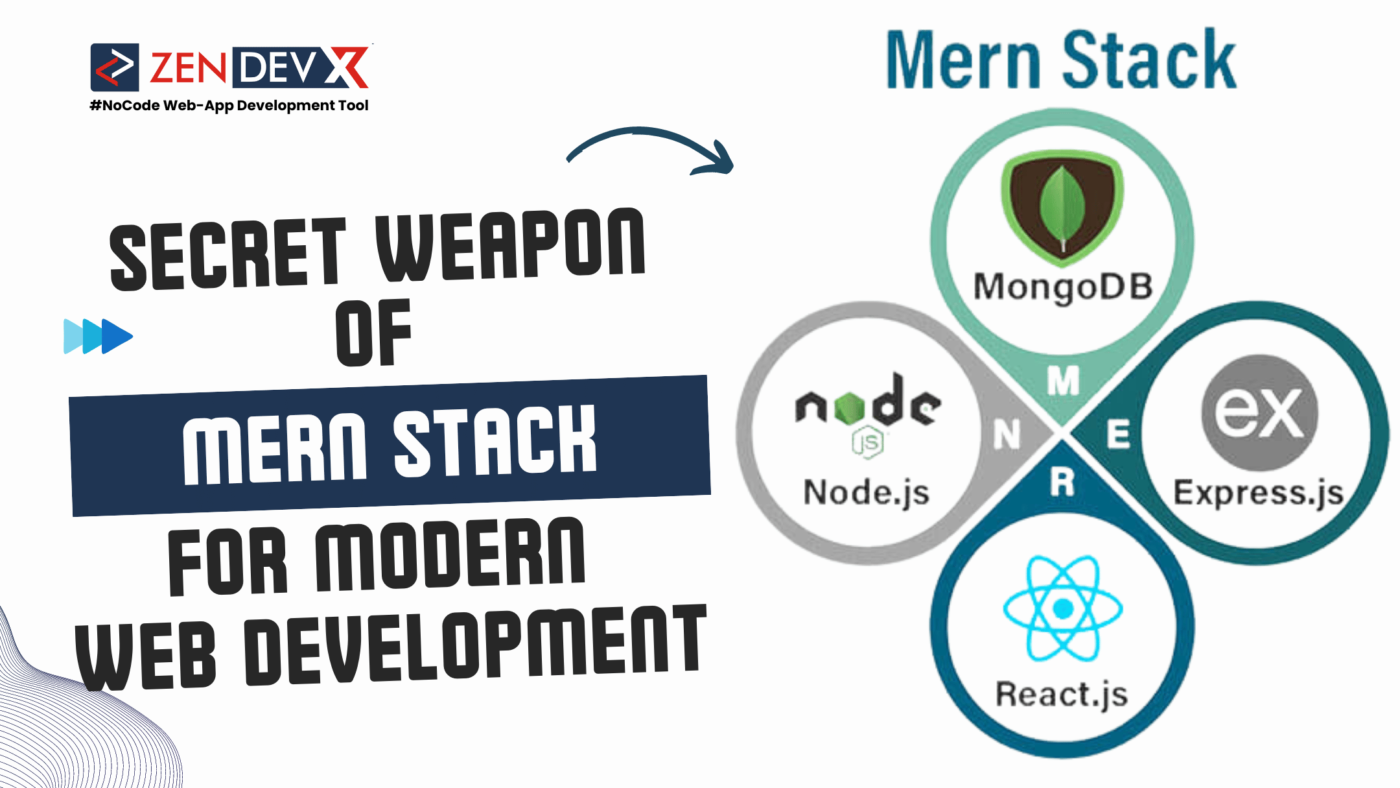Web development encompasses designing, developing, and maintaining websites. It includes database management, web publishing, programming, and web design. One of the prominent stacks used in web development is the MERN stack. This stack provides developers with an end-to-end platform essential for building web applications.
What is the MERN Stack?
The MERN Stack is a JavaScript stack that facilitates the rapid and efficient deployment of full-stack web applications.
It comprises four key technologies : MongoDB, Express, React, and Node.js. Together, these technologies streamline and simplify the development process.
- The Non-Relational Database – MongoDB
- Express is a web server for Node.js
- JavaScript Front End Framework – React JS
- Web Server – Node JS
Mechanism of MERN Stack
Working with the MERN stack, developers use React, Express, and Node to build the view layer of a website, and MongoDB is used to construct the database layer.
The cross-platform document-oriented database MongoDB
A document of key-value pairs akin to JSON (JavaScript Object Notation) objects makes up a record in the NoSQL database MongoDB. Flexible, MongoDB lets users build schema, databases, tables, etc. The fundamental unit of MongoDB is documents identified by a primary key. Following the installation of MongoDB, users can also use Mongo shell. Mongo shell offers a JavaScript interface for user interaction and operation (e.g., querying, updating, removing records).
MongoDB : Cross-Platform Document-Oriented Database
MongoDB is a non-relational NoSQL database that stores records as JSON-like objects with key-value pairs. Its JavaScript-based interface, Mongo shell, simplifies the design and maintenance of schemas, databases, and collections. After installing MongoDB, users can manage databases using Mongo shell, with primary keys used to identify documents. The versatility of MongoDB is enhanced by Mongo shell’s ability to access and manipulate these primary key-identified documents. MongoDB’s fundamental unit is the document identified by a primary key. Mongo shell allows users to query, update, and delete records, making MongoDB a highly adaptable database solution.
Why MongoDB?
- Fast – Being a database focused on documents, indexing documents is simple. As such, a faster response.
- Scalability – Massive data can be managed by partitioning it among many computers.
- Use of JavaScript – MongoDB is primarily useful for JavaScript users.
- Schema Less – Any form of data in another document is schema-less.
- Data stored in form of JSON
- JSON data examples are objects, object members, arrays, values, and strings.
- Application of JSON syntax is relatively easy.
- JSON has extensive browser compatibility.
- Sharing data of any size and type (audio, video) is easy.
- Basic Environment Setup: MongoDB setup is relatively easy.
- Flexible Document Model: MongoDB facilitates faster and simpler document models (tables, schemas, columns & SQL).
Express : Back-End Framework
Expression is a Node.js framework. Back-end code authoring is more accessible and straightforward with Express than with Node.js and a tone of Node modules. Express aids excellent web application and API design. Many middlewares that Express enables allow for shorter and simpler code.
Why work with Express?
- Asynchronous and lone threaded.
- Quick, effective, scalable
- Has the largest Node community jQuery
- The integrated router in Express encourages code reuse.
React: Front-End Library
The JavaScript framework React enables the creation of user interfaces. React is used to create single-page and mobile applications because it can handle quickly changing data. Write JavaScript code and create UI components with React.
Why to use React ?
- Virtual DOM: A DOM object represented virtually is called a virtual DOM object. A virtual DOM is a replica of the original. Every change to the web application forces the virtual DOM to be rendered again for the user interface. The original DOM then does the modifications after comparing the differences between this virtual DOM and the original one.
- JavaScript XML is abbreviated JSX. React uses it as an HTML/XML JavaScript Extension. Enables writing React components to be done more simply.
- ReactJS supports components which are the fundamental units of UI and components individually have logic and add to the overall UI. Furthermore, by encouraging code reuse, these elements simplify the web application.
- High Performance: Its features, including Virtual DOM, JSX, and Components, make it considerably faster than other frameworks available.
- Creating Android and iOS Apps: React Native makes it simple to create Android and iOS apps with just an understanding of JavaScript and
React JS.
Node.js : JS Runtime Environment
By offering a JavaScript environment, Node.js enables users to execute their code on the server (outside the browser. A user can select from thousands of free packages (node modules) to download using the node pack manager or npm.
Why Would I Use Node.JS?
- JavaScript Runtime Environment available as an open-source
- Single threading: Adheres to a single-threaded paradigm.
- Quick data streaming Constructed with the JavaScript Engine of Google Chrome, Node.js executes code quickly.
- Great Scalability


